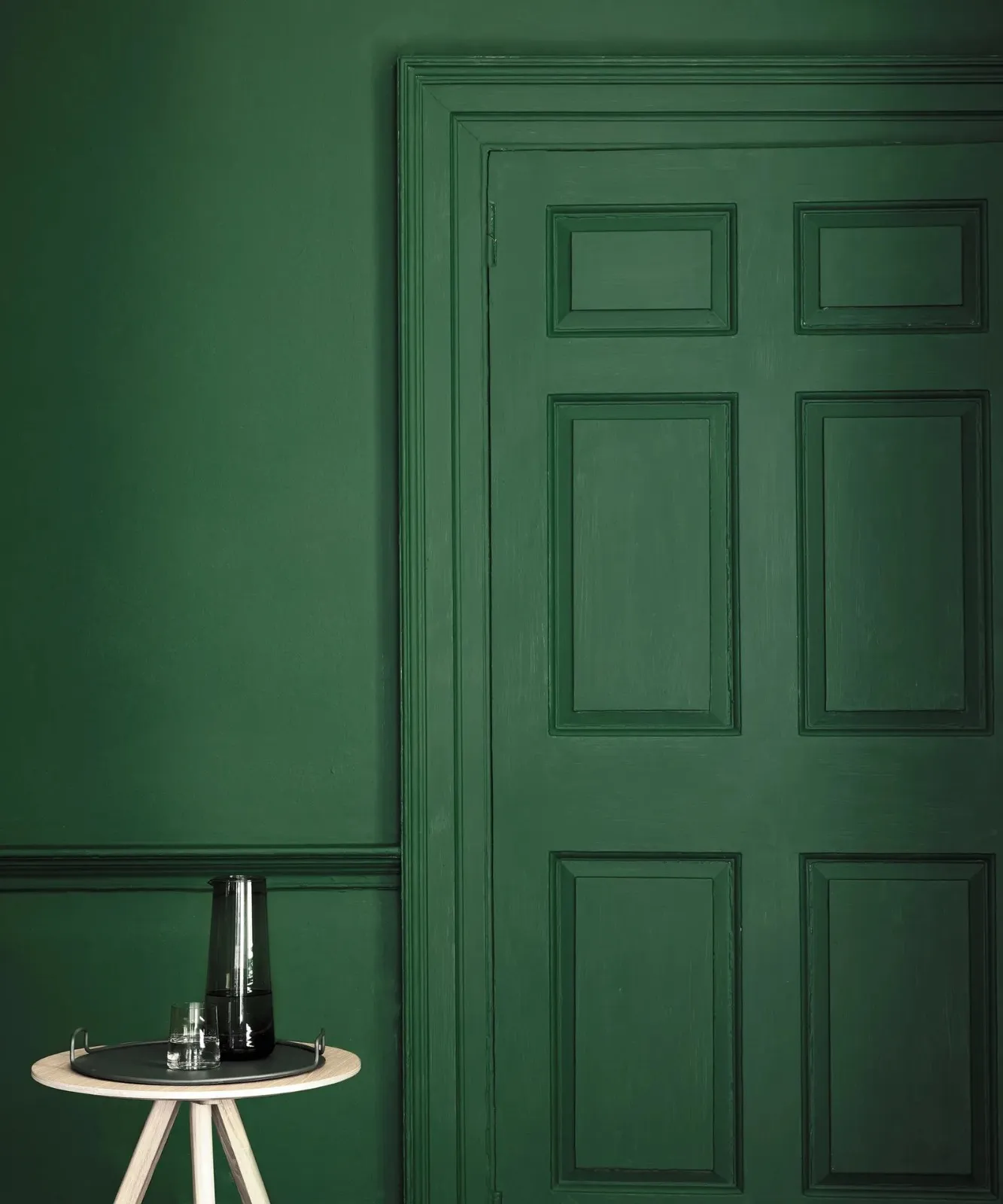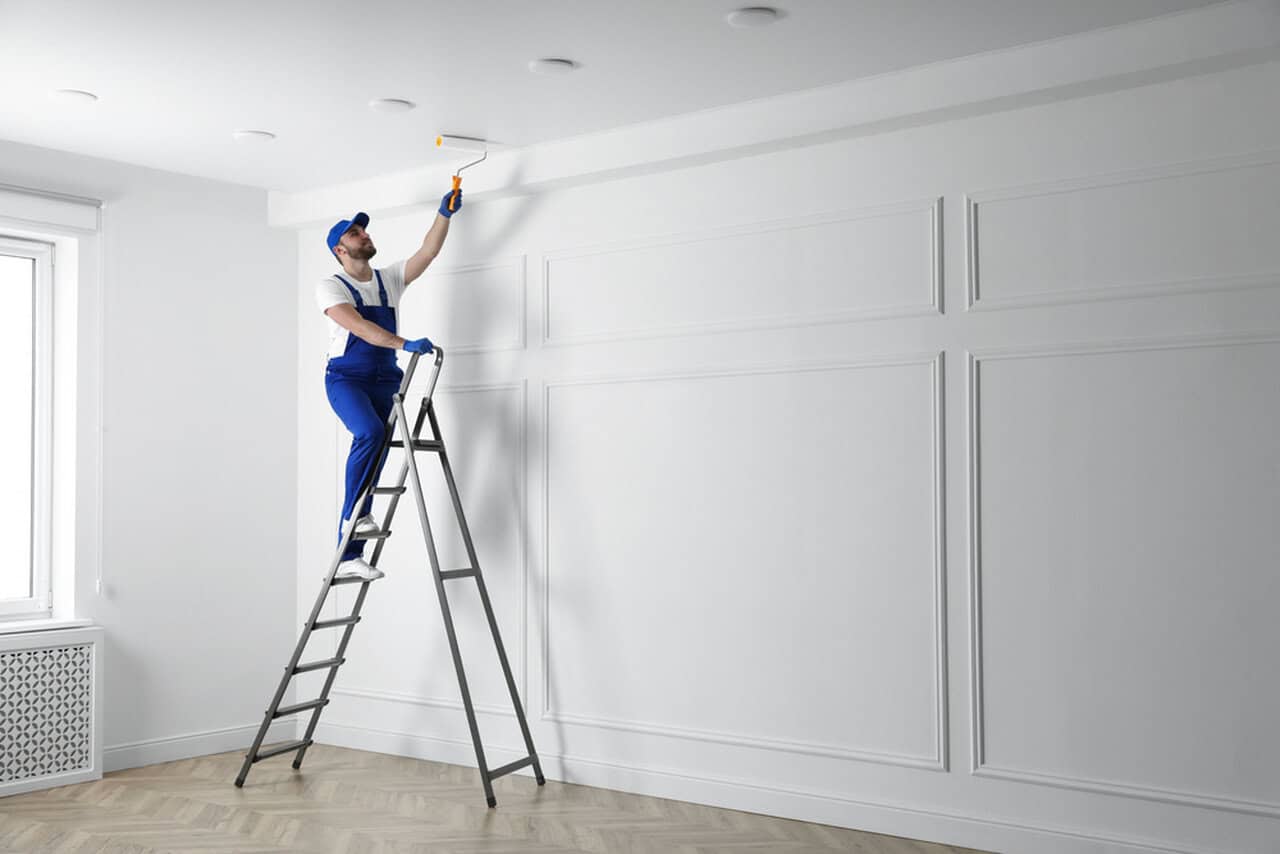If you’ve ever stood in a freshly painted room, paintbrush in hand, wondering whether your interior doors should match the wall color, you’re not alone. It’s a surprisingly common design question — one that can subtly shape the look and feel of your home.
The choice isn’t just about aesthetics. The color of your doors can influence:
- How spacious a room feels
- The flow between different rooms
- The style statement your home makes
Today, we’ll walk through design considerations, real-life examples, and practical tips so you can confidently decide what works best for your space.
Understanding the Visual Impact
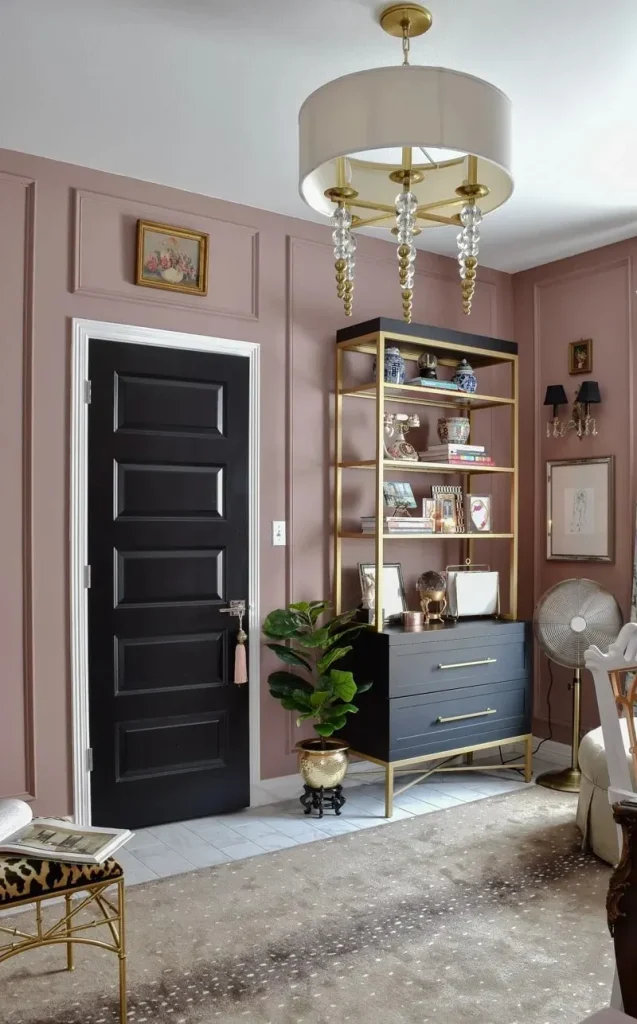
Before diving into style trends, it’s worth understanding how color perception works in a room.
Design Tip: Color is never seen in isolation — it’s always influenced by the colors and lighting around it.
When a door matches the wall color, it visually blends into the background. This creates:
- A seamless, minimalist look
- Less visual “choppiness” in small spaces
- A softer, more relaxed feel
In contrast, a door in a contrasting color becomes a feature in the room. It can:
- Add architectural interest
- Highlight trim and molding
- Bring personality and style
The Case for Matching Doors to Walls
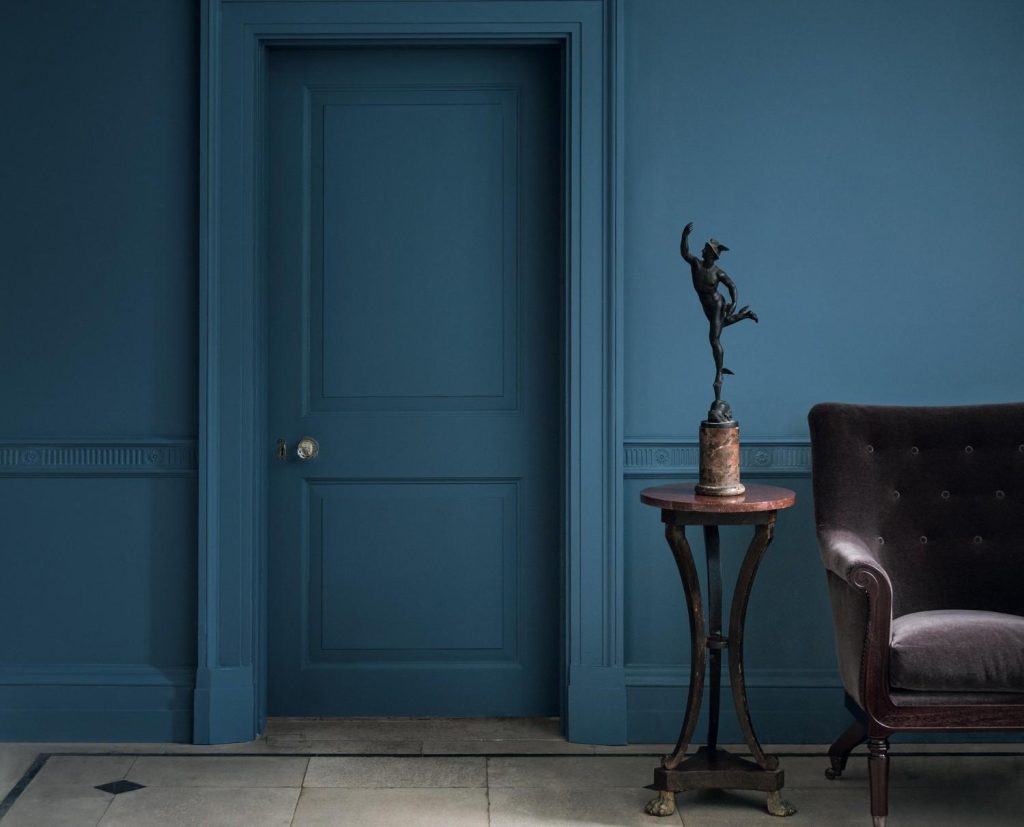
Matching your interior doors to your walls can create a cohesive and calming effect, especially in modern or minimalist spaces.
Benefits of Matching
- Visual Continuity: Rooms feel larger when surfaces blend rather than break visually.
- Calming Atmosphere: Monochrome palettes are soothing and reduce distractions.
- Contemporary Appeal: Many modern interiors use wall-to-door color continuity for a sleek look.
Example:
If you have small hallways with multiple doors, painting them the same color as the walls helps them fade into the background, keeping the focus on your décor rather than the doors themselves.
| Room Type | Why Matching Works Well |
|---|---|
| Small Hallways | Prevents cluttered look with multiple doors |
| Minimalist Bedrooms | Keeps lines clean and restful |
| Modern Living Rooms | Maintains sleek, architectural feel |
The Case for Contrast

On the other hand, using a different color for your doors can make a strong style statement.
Benefits of Contrast
- Architectural Drama: Dark or bold-colored doors can anchor a light-colored room.
- Showcasing Molding: White trim against colored walls highlights craftsmanship.
- Historical Charm: Many traditional homes feature rich wood-stained doors with lighter walls.
Example:
In a white kitchen, a matte black pantry door can add modern edge and draw the eye — especially when paired with black cabinet handles or light fixtures.
| Door Color | Best Wall Pairings | Style Vibe |
|---|---|---|
| Black | White, light gray | Modern, bold |
| Natural Wood | Warm neutrals | Rustic, classic |
| Navy | Soft beige, pale gray | Sophisticated, coastal |
Considering Your Home’s Style
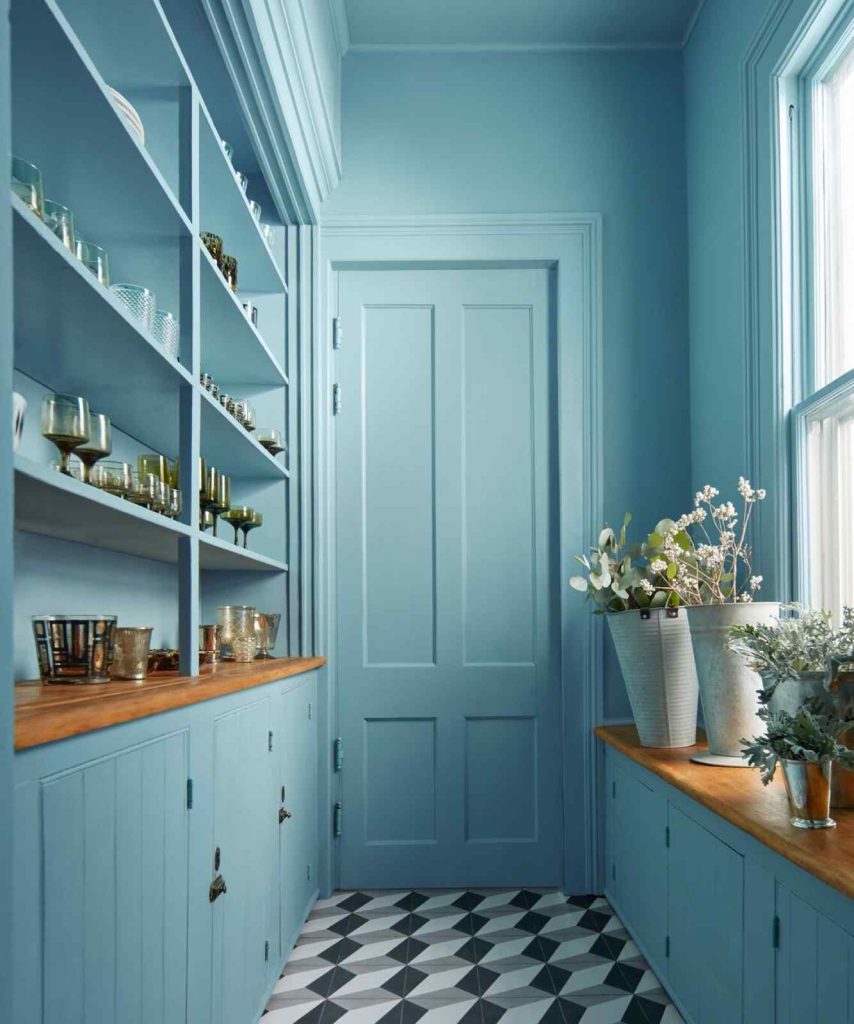
Your decision should also align with your overall home style:
- Modern/Minimalist: Matching colors work best.
- Traditional: Contrasting doors with crisp white trim often feel more appropriate.
- Boho/Eclectic: Either works — but contrasting doors allow more playful experimentation.
Designer Insight: Think of the door as part of the furniture. Would you rather it blend in like a wall cabinet or stand out like an accent chair?
The Role of Lighting
Lighting changes everything.
- Natural Light: Rooms flooded with daylight handle bold contrast well.
- Low Light: Matching doors can help small, dim rooms feel brighter and less closed in.
Pro Tip: Always test paint samples on the actual door and nearby wall under the same lighting conditions your room experiences daily.
Practical Considerations

Aesthetics aren’t the only factor — maintenance and longevity matter, too.
Durability
Doors endure more wear than walls. Using a durable, easy-to-clean paint finish (like semi-gloss) may mean a subtle difference in sheen if you match the wall color exactly.
Repainting
If you change your wall color often, matching doors means extra work. Contrasting doors (especially in neutral tones) can remain timeless even if walls change.
Resale Appeal
If you’re selling soon, neutral matching or contrasting in classic shades (like white doors with beige walls) appeals to most buyers.
Using Trim as a Buffer
Trim can completely change the effect of matching or contrasting colors.
- Matching Door + Matching Trim: Creates full camouflage.
- Matching Door + Contrasting Trim: Adds definition while keeping the door subtle.
- Contrasting Door + Matching Trim: Makes the door a bold centerpiece.
Example Visual Flow:
Imagine a soft greige wall with a slightly darker greige door — both framed by crisp white trim. You get subtle variation without overwhelming contrast.
Real-World Scenarios
Here’s how different scenarios might play out in real homes:
| Scenario | Recommendation |
|---|---|
| Small Apartment | Match doors to walls to avoid visual clutter |
| Period Home with Wood Details | Keep doors natural wood for authenticity |
| Rental with Builder-Grade White Doors | Leave them white, repaint walls for contrast |
| Modern Renovation | Consider hidden flush doors painted to match walls |
Common Mistakes to Avoid
- Choosing a Match Without Considering Finish: Same color but different finishes can look mismatched if not intentional.
- Forgetting the Back of the Door: If rooms are painted different colors, decide which room “owns” the door color.
- Ignoring Hardware: The color and style of your door handles can change the overall look — modern handles on traditional contrasting doors can feel off.
A Balanced Approach
You don’t have to choose one rule for the entire home. Some designers vary the choice depending on the room:
- Match in tight corridors or rooms where calm is desired.
- Contrast in focal areas like dining rooms or home offices.
This approach keeps your home feeling intentional without being overly uniform.
Final Thought: The best choice is the one that fits your space’s size, lighting, and personality. Matching doors and walls can create a serene, modern flow — but a contrasting door can be the personality your room is missing.
Quick Decision Checklist
- Room Size: Small? → Match. Large? → Either works.
- Natural Light: Low light? → Match for brightness.
- Style: Minimalist → Match. Traditional → Contrast.
- Maintenance: Like changing wall colors? → Contrast.
In Summary
Whether you match your interior doors to your walls or choose contrast comes down to how you want the room to feel.
If you crave seamless flow, choose matching tones. If you want definition and character, let your doors stand apart.
Both approaches can look stunning when done intentionally — and now you have the tools to make the choice that works for your home.
Until next time,
Stay safe,
Tasos
I’m Anastasios Moulios, co-founder of DIY Cozy Living. I enjoy finding creative, practical ways to make small spaces feel warm, stylish, and lived-in — whether it’s a camper, a backyard, or a cozy room inside. I started this blog with Katerina to share real ideas that make home feel a little more personal and a lot more comfortable.

